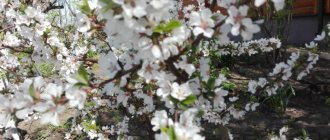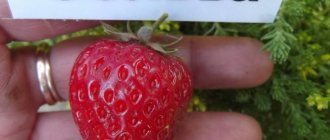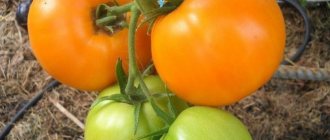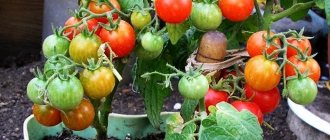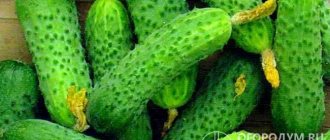Strawberries look very impressive as a hanging crop. Cascades of flowering rosettes on long shoots create a magnificent landscape. But strawberries blooming with bright crimson flowers look even more interesting. The Italian strawberry variety Tuscany (Toscana F1) looks so unusual and fascinating. The plant can be strewn with both ripe and unripe berries, flowers, and buds.
Strawberries Tuscany - new from ABZ seeds
Description of the variety
If you have a winter garden, then Tuscany strawberries will become its year-round decoration. The variety can be grown indoors and outdoors, just like regular remontant strawberries.
Tuscany was bred in 2011 and in the same year the variety became the winner of the world competition of ornamental plants FleuroStar 2011/12
Bushes
The bushes of Tuscany are powerful: up to 45 cm in diameter, about 20 cm high. The mustache is also powerful and can grow a meter from the mother plant. This feature, combined with bright ruby or pink flowers, is ideal for planters and vertical gardening.
Berries
The Tuscany variety produces beautiful red conical berries weighing 10-15 g, which, when ripe, emit an unusually pleasant strawberry aroma. The pulp is pleasantly dense, juicy and sweet. This is a pleasant bonus to the decorative nature of the culture.
Productivity
Tuscany can bloom and bear fruit almost continuously. It produces a lot of berries. In open ground, you can get up to 500 g of tasty fruits from a bush in one season.
It is easy to extend the fruiting period of Tuscany and increase the productivity of the variety if you grow it in containers and bring it indoors in the fall
Caring for ampelous strawberries at home
Suitable containers for planting homemade strawberries are pots with a diameter of at least 30 cm, as well as boxes and containers 60 cm long, 30 cm wide and 15 cm deep. Containers must have drainage holes in the bottom and lower part of the side walls (if it is a box or container). You can build a rack on which to place pots and boxes on ledges, which will make it possible to significantly increase the number of plants grown in a small area. A layer of drainage (charcoal, fine crushed stone) is placed at the bottom of the containers and filled with a mixture of 2 parts humus, 4 parts turf soil and 1 part sand, which is disinfected before planting with a hot solution of potassium permanganate (I used ready-made universal nutrient soil for growing vegetable and berry crops). Seedlings are planted in containers at a distance of 20–25 cm in such a way as to provide the roots of each bush with a feeding area of at least 30 square meters. cm.
Choose a suitable place for the strawberries: a balcony, loggia or windows that are illuminated by the sun longer than others - eastern, south-eastern, southern or south-western. It would not be amiss to organize artificial additional illumination (in the autumn-winter period) of strawberries with fluorescent lamps (40 watts), since for this crop at any time of the year the optimal duration of daylight hours should be 12 - 14 hours. Lack of lighting will negatively affect the growth activity and appearance of the bushes, although you should not “abuse” it either, because for normal fruiting, strawberries need obligatory periods of “night sleep.”
In general, care is the same as for ordinary strawberries, but there are some differences. Since remontant varieties (i.e., continuously flowering and bearing fruit over a long period of time) have a long fruiting period, the plants need increased nutrition. Fertilizing (with organic or complex mineral fertilizers) is carried out from June to August, once every 10-14 days. Water as needed, depending on weather conditions. Such agricultural technology ensures the continuous formation and development of buds, flowers and berries.
Strawberry bushes grown at home should be slightly shaded from the hot sun. It is recommended to remove the first formed flower stalks so that the bush gains strength for fruiting. During the period of flowering and ripening of berries, the temperature in the room should not be allowed to drop below 18 °C. Once flowering begins, artificial pollination should be carefully carried out once a week with a painting brush. The formation of whiskers in homemade strawberries also needs to be controlled: no more than 5 whiskers can be left on one bush, located in a well-lit area. The rosettes that form on them need to be rooted so that during fruiting they do not weaken the mother bush, and the stolons and first peduncles of already well-rooted plants must be cut off. For reproduction, it is enough to leave no more than 2 whiskers, and whiskers that go into the shadows should be removed altogether.
Do not forget that strawberries can be susceptible to diseases even at home, and therefore it is necessary to periodically ventilate the plantings and prevent the soil from becoming waterlogged.
a brief description of
Tuscany strawberries have many strengths, which relate not only to their magnificent appearance.
Advantages of the variety
- ease of care;
- the possibility of growing as an original hanging crop;
- high stable productivity, which is slightly dependent on weather conditions;
- the ability to quickly propagate the plant with rosettes;
- delicious, aromatic, medium-sized berries for universal use;
- resistance to sudden changes in temperature;
- heat-drought resistance;
- high immunity to common diseases of berry crops, including powdery mildew, root rot and spotting;
- long fruiting period, which can be extended if the plant is placed in warm conditions.
Disadvantages of the variety
- the need to control alignment;
- not the highest yield and not the most delicious fruits, the variety is considered precisely as an ornamental one.
Characteristics and features of the variety
None of the preceding species fit the description of the Tuscany strawberry variety, because this is a completely new class of hybrids with a new flower color. The main characteristic of the hybrid is pink and very large (up to 4 cm) flowers. This is what distinguishes this variety from other varieties of strawberries, which usually have white flowers.
The flowering of the strawberry bush ends with the formation of large cone-shaped fruits weighing from 30 to 40 g. The taste of the berries on a 5-point scale is rated high at 4.5 points. The berries are dark red in color, with a pronounced strawberry flavor (sugar, with a slight sourness) and a pleasant aroma.
Strawberry Tuscany
The ampelous type of low garden strawberry with dark green, spreading leaves grows up to 20 cm in height. The shoots reach a length of 1 meter.
Strawberry Tuscany
Attention! The plant can be grown not only in the garden, but also in a hanging pot on the balcony or terrace. Gardeners can decorate borders, garden paths, and the edges of flower beds with them.
The hybrid throws out a lot of flowering tendrils, which look very decorative in hanging flowerpots. The crop blooms and bears fruit profusely, from mid-spring until the first autumn frosts. One bush of mature remontant strawberry can produce up to 1 kg of medium-sized berries.
This variety of strawberry tolerates frost and short-term drought well. For the winter, stationary plantings of Tuscany in the beds should be covered with available material.
If this variety of remontant strawberry is grown in pots or other portable containers, it is recommended in the fall, when temperatures drop to 10-12°C, to cut off the above-ground part and place the plant in a cool (10-18°C) dark place for wintering. Water the bushes at this time rarely and in small volumes, trying to avoid waterlogging the soil in the pots.
In the spring, when persistent heat sets in outside, the containers with strawberries are again taken to the same bright place in the garden.
It is important to know that a good harvest of berries from one bush can be harvested in the first 2-3 years. In subsequent years, the yield of the variety decreases, so the plantings are renewed by planting young plants in new fertile soil.
Landing
In February and March, the seed method of establishing a plantation is used. In April, May, July and August - seedlings. If you plant Tuscany in the spring, it will be possible to harvest in the summer.
The variety is not picky about growing conditions, but prefers sunny places. In the garden you can set aside an alpine hill for it or plant bushes along the paths. Suspended structures look most impressive.
The soil should be light, loose and rich in humus. Each plant will require a container with a volume of 2-3 liters. In open ground, Tuscany seedlings are planted at a distance of 70 cm from each other in a row, leaving 1.5 m between rows. In summer, the free space will quickly be occupied by young fruiting rosettes.
For pots and baskets, it is effective to use ready-made soil mixtures intended for berry crops. If you prepare the soil mixture yourself, you need to achieve a loose, fertile structure and neutral acidity. You can use a mixture of peat with vermicompost, adding a long-acting fertilizer, for example, Osmokot
Soil, watering and hardening of strawberries
The culture does not like it when the root system dries out for a long time, especially since the volume of water in the pots is limited. To retain water longer, the soil is mixed with special hydrogels. For this purpose, you can also install containers in pallets specially selected for the required dimensions.
In the spring, before planting strawberry seedlings in the ground, they are hardened off. To do this, reduce watering and often take it out to an open loggia or terrace. Transplantation is carried out in May, when stable above-zero temperatures allow.
Tuscany strawberries, like other varieties, prefer slightly acidic and neutral soils with a pH of 5-6. The composition of the soil should be sandy loam or loamy with a good humus content. Podzolic soils must be enriched with mineral and organic fertilizers. To do this, it is enough to contribute per 1 sq. meter 3 tbsp. l. azophoska and a bucket of leaf humus.
Strawberry Kimberly
Important! It is better to plant seedlings in the evening. The distance between bushes is maintained at about 30 cm.
After planting, you can mulch the soil with grass without seeds or with a special dark, air-permeable material that is sold in agricultural stores.
Although Tuscany strawberries are drought-resistant, young plants should not be allowed to dry out. For successful growth and further fruiting of plants, you need to try to regularly water the plantings. When watering, monitor the condition of the strawberry rosette so that it is not covered with earth.
Growing and care
Despite the original appearance of the plant, it does not require any special agricultural technology. When caring for the Tuscany variety, you must follow the same rules as for other strawberry crops.
Watering
Watering should be plentiful and constant, since the plant does not work hard throughout the entire season. At the beginning of the growing season, the bushes require more moisture, and during the fruiting period a little less. In hot weather, strawberries are watered twice a week: in the morning or in the evening.
During the period of flowering and fruit ripening, a stream of water is directed under the root to avoid getting the leaf plates and fruits wet, which can lead to the spread of rot.
Loosening, weed control
Loosening is possible if you plant the bushes in a single row and direct the tendrils to a certain place, preventing the plantation from becoming overgrown. In other cases, strawberries cover the area with a continuous carpet.
Tuscany does not tolerate weeds, and even tries to fight them itself, quickly conquering free territory. If you do not clear the bed of weeds, the variety’s productivity and immunity will decrease.
What to do with a mustache?
The productivity of hanging varieties depends on their ability to produce mustaches with young rosettes. The rosettes on the tendrils quickly begin to bear fruit on their own, without rooting. This process does not in any way affect the quantity or quality of the berries of the mother bush. Therefore, mustaches are rationed only if strawberries have a limited area.
Top dressing
To successfully grow a hybrid, regular feeding is required. Numerous rosettes and continuous flowering and fruiting quickly deplete the soil. Fertilizers are applied once every 15 days. The best way to saturate a plant with nitrogen, phosphorus and potassium is to dilute a solution from a ready-made complex fertilizer, where microelements are in chelated form.
To maintain high decorative qualities, in particular the bright colors of flowers, it is recommended to fertilize Tuscany with increased doses of potassium fertilizers
Pest and disease control
Not a single variety of strawberry is completely protected from insect attacks and diseases. As for Tuscany, the main danger for it is ticks. If there is an invasion of these insects in the garden, then there is nothing left to do but treat the bushes with preparations based on karbofos. The berries will be unfit for food, but the bushes will be saved. It is optimal to do prevention or get rid of pests while there are few of them, using folk remedies:
- A decoction of onion peels. Pour 300 g of husk with water and boil for 7 minutes.
- Infusion of garlic. Pour 2 heads of chopped garlic along with the peel into 6 liters. warm water and let it sit in the sun for three days. Add 1⁄2 piece of grated laundry soap.
It is recommended to spray the plant in cloudy weather, early in the morning or in the evening.
To prevent the appearance of aphids, it is necessary to remove ants from the area. As long as there are ant nests in the garden, it is almost impossible to get rid of aphids. Colloidal sulfur is also used against strawberry mite.
Preparing for winter
The Tuscan shelter is produced in regions where winter temperatures drop below -10℃. The plant is covered with straw, sawdust, spruce branches, and compost. It is not recommended to insulate with plastic film; the film can lead to the development of fungal infections. A good modern means for insulating garden plants is agrofibre.
Strawberries in containers are brought into a room where the temperature is kept within -2…+2℃. Under these conditions, Tuscany will be in a dormant period until spring.
Diseases and pests, methods of control and prevention
Strawberries are liked not only by people, but also by many insects and birds. And if you can protect crops from birds with a net, they are protected from insects by spraying with insecticides or using organic methods of control. Check your plants once a week to spot any aphids or slugs.
Main pests:
- The weevil is a small, bronze-colored beetle. Damages strawberry buds, which leads to their falling off. One beetle is enough to destroy 50 ovaries. To combat it, the drug “Namabakt” or “Intra-vir” is used at the time of flowering.
- The strawberry leaf beetle is a beautiful beetle with a round shape and dark chestnut color. It attacks the leaves, leaving many small holes and deformed edges of the leaf blade. To destroy the beetle, use “Karbofos” and “Metafos”.
- The larvae of the May beetle (chafers) damage the underground part of the plant. Use Aktaru, Zolon or Bazudin to destroy.
- The strawberry mite damages the leaves, causing them to wrinkle and wilt. For treatment, spraying with a solution of colloidal sulfur is used.
- Aphids are a widespread pest of gardens and vegetable gardens. These are small insects that damage leaves and leave a sticky coating on them. Spraying crops with a solution of insecticidal soap is used against aphids.
- Thrips are small brown or black insects with small wings. The result of their activity is damage to the leaf blade of the leaf, followed by wilting and falling. To destroy them, you can also spray with a solution of insecticidal soap.
- Slugs appear when the air temperature drops and humidity is high. They damage both leaves and berries. The measures taken to combat them are very varied: farmers sprinkle the rows with broken shells, make ditches with water around the beds, and pour phosphorus-potassium fertilizers into the rows, which slugs cannot tolerate.
The choice of insect control products always depends on what kind of pest you have found. Most often, the choice is made on broad-spectrum drugs that work against many pests at the same time.
Typically, diseases affect strawberries due to non-compliance with the watering regime and excess moisture. The San Andreas variety is declared to be resistant to fungal diseases, so there is no need for intensive use of chemicals.
Read more: treating strawberries from pests and diseases.
Reproduction
Tuscany strawberries are an F1 hybrid, so it is useless to collect seeds from the berries yourself. They do not inherit maternal qualities. Seed material is only suitable from seed laboratories.
At home, Tuscany easily and quickly reproduces with a mustache. If you managed to get just a couple of bushes, by the end of summer they will turn into a decent seedling bed. In September, the seedlings are cut off from the mother bush and planted for permanent residence. Next year there will be enough seedlings for all neighbors in the dacha cooperative.
Reviews of the Tuscany strawberry variety
Tverdokhleb Alina Mikhailovna, 32 years old, Voronezh
I have been growing this variety for many years, picking berries almost all year round. On the plus side: it doesn’t get sick, insects don’t climb into the bushes, the berries are delicious. I would especially like to note that the Tuscany bushes are very beautiful, just like a flower bed in the beds. There is only one downside: you constantly have to run around to water it, but that’s a small price to pay for such beauty. Otherwise the variety is unpretentious. Well, sometimes I prune when the strawberries are growing too much, which makes the berries grow quickly.
Egorova Anna Vasilievna, 30 years old, Moscow
I planted two strawberry bushes on my balcony. It bloomed all summer and picked berries twice. In the fall they shrank a little, but the appearance was much more important to me - the bushes are very beautiful, lush. The flowers are bright crimson, with a delicate scent.
Bogatyreva Lyudmila Ivanovna, 40 years old, Smolensk
I bought Tuscany strawberry seedlings and planted them in the spring. The bushes bloomed quickly, very beautifully. I planted them in baskets, so they turned out to be such neat rose bushes. The neighbors even thought they were just some flowers. The berries are medium and sweet. I’m not a fan of making jam, so I ate it just like that. I propagated the variety with a mustache, easily and simply. For three years in a row I have been steadily planting Tuscany and have no plans to switch to another variety. During this time, the bushes never got sick, although before this, strawberries of other varieties picked up something every now and then. I don’t process anything in particular. Sometimes I feed it, the harvest is stable. I'm happy with everything.
Reviews
I plant Tuscany for decorative purposes around the gazebo. You won’t get a big harvest from it, and the fruits aren’t the sweetest, but you can eat a couple of berries in the July heat and admire the beautiful pink flowers.
Strawberries Tuscany will enhance any garden and make the terrace or porch of your home cozy. Tuscany is a decorative variety. It won’t require any special care, but you won’t get a high yield from it either. Landscape designers will appreciate the variety, but berry growers definitely have no need for it.
Advantages and disadvantages of the variety
Growing Tuscan strawberries in hanging baskets offers a number of benefits:
- Occupy small spaces.
- It is not only a decorative decoration, but also a healthy food product.
- The crop is more resistant to damage by harmful insects and soil-borne diseases.
- It is more convenient to harvest.
- In a suspended state, animals (hedgehogs and others) will not be able to eat the berries.
- Hanging strawberry baskets can be easily protected from frost by placing them in a warm room, thereby prolonging fruiting.
The disadvantages of growing strawberries in baskets include:
- The need for frequent watering and the possibility of drying out the roots, which can affect fruiting.
- Annual renewal of the soil for safe nutrition of the crop and a rich harvest of berries.
With the development of a new variety of Tuscany strawberries, new possibilities for its use as an ornamental crop are opening up. The fashion for such “edible decorations” from Europe is spreading to Russian cities. This hybrid perfectly performs two-in-one functions.
0 0 votes
Article rating
Planting blackberries in open ground
What time to plant
Growing blackberries is quite difficult, especially for an inexperienced gardener. However, the fruits of this crop are incredibly healthy and very tasty, so the effort put into mastering the unusual blackberry agricultural technology will not be wasted. Experts advise planting blackberries in open ground in the spring from the last days of April to the first days of May after the soil has warmed up well. However, autumn planting is not recommended for this crop. Blackberries prefer sunny places, which must be protected from gusts of wind. The fact is that wind can damage the foliage and fruits of the plant, as well as interfere with normal pollination. It is recommended to choose a site for planting not on a flat area, but on a western or southern slope, in this case the plant will be protected from the north and east winds. For such a crop, breathable, drained, nutrient-rich loam is best suited; it can also be grown on sandy loam soil. If it is planted on carbonate soil, the bush will lack iron and magnesium. Recommended soil acidity pH 6.
Before proceeding with the actual planting of the plant, it is necessary to ensure that the soil meets all the agrotechnical requirements of blackberries. It is recommended to begin site preparation in the autumn; all weeds must be removed from it, as well as pathogenic microorganisms and all pests destroyed. If the garden soil is systematically fertilized, then applying fertilizers specifically for blackberries will be unnecessary, since an overfed plant begins to actively grow green mass, which negatively affects fruiting. However, if another crop was grown on the site before blackberries, the soil may be severely depleted. In this regard, during the preparation of planting holes or furrows, the top nutrient layer of soil must be thrown aside. It must be combined with 10 kilograms of compost, manure or humus, 25 grams of potassium sulfate and 15 grams of superphosphate per 1 m2 of land. When planting blackberries, you will need to fill the root system with this soil mixture.
planting blackberries
Watch this video on YouTube
Planting blackberries in spring
If you want to grow healthy, strong blackberries that will bring a rich harvest, then you should not neglect a single rule of agricultural technology for this crop
Special attention should be paid to purchasing a seedling. It is recommended to buy seedlings from nurseries that have been verified or have a good reputation
You need to choose annual seedlings that have a well-developed root system, 2 stems, the diameter of which should be more than 5 mm, and most importantly, pay attention to the fact that there must be a formed bud on the roots. The width and depth of the planting hole directly depends on the age and quality of the seedling. When choosing a site for blackberries, you should take into account that there should be at least 100 centimeters from it to any other garden plant or building, and if possible more. The distance between the plants themselves directly depends on the method of cultivation (bush or strip) and on the ability of the variety to form shoots. If the bush planting method is used, then 2 or 3 seedlings that have a low level of shoot formation must be planted in one planting hole at once, and the layout of the holes should be 180x180 centimeters. Most often, the strip method of planting blackberries is used for varieties with enhanced shoot formation. In this case, plants are planted in a furrow in a continuous chain, while a distance of 100 cm is maintained between seedlings, and the row spacing should be 200–250 cm.
The plant is placed in a groove or hole, and then its roots are carefully straightened, directing them in different directions. Then the root system should be sprinkled with a nutrient soil mixture (see composition above) so that the bud located at the base of the shoot is buried 20–30 mm into the soil. It should also be noted that the hole or furrow should not be filled to the level of the surface of the site. It is necessary that something like a recess or hollow remains, and its surface should be several centimeters below the level of the site. In this case, snow, melt or rainwater will accumulate in the resulting hollows or recesses, which will significantly reduce the number of irrigations. The soil around the planted plants needs to be compacted, then they are watered using 3–6 liters of water per 1 bush. After the liquid is completely absorbed into the soil, the surface of the holes or hollows should be covered with a layer of mulch (manure or peat manure compost). Planted seedlings must be shortened to a height of 20 centimeters above the surface of the site, while the fruit branches must be cut off completely.
Feeding
Shrubs need intensive nutrition. In one season, strawberries take a large amount of nutrients from the soil.
Fertilize the plantation according to a certain scheme.
- The first time the work is carried out in March. Select nitrogen compounds that are needed for the development of lush green mass. Per square meter of land use 20 grams of urea or a bucket of rotted manure.
- A water-based solution of mullein (1 to 10) is used in May. Bird droppings will also go (1 to 20).
- When flowering starts, complex mineral compositions are chosen that contain potassium, nitrogen, phosphorus and other nutrients. Some gardeners choose wood ash (a glass per square meter of land).
- After fruiting has finished, the soil is fed with leaf compost. It is evenly distributed over the ground.
San Andreas garden strawberries prefer fertile soils. The soil is fed with humus. Organics make the berries larger and juicier. To ensure that young shrubs develop quickly, experienced gardeners use mullein. It is applied every 6-8 days in a ratio of 1 to 10. After feeding, the plants need to be watered so as not to burn the root system. Depleted soils need feeding most of all.
Modern requirements for garden strawberry varieties.
A modern strawberry variety should have the following set of characteristics. — Powerful, erect, compact or semi-spreading bush, dense or medium foliage. — The ability to form mustaches with rosettes is moderate. — Peduncles are numerous, strong, elastic, non-lodging, at or above the level of the leaves. — Inflorescences are compact, multi-flowered, umbrella-type, raised above the leaves. — The flowers are bisexual, self-fertile, blooming at the same time. — The berries ripen at the same time, large (more than 25 g), leveled, symmetrical, conical in shape with a clearly defined neck, smooth, shiny. — The stalk comes off easily, the calyx is freely separated from the berry. — The skin of the berries is bright red, evenly colored, dense, the achenes are few in number, slightly embedded in the pulp. — The pulp is red, juicy, dense, aromatic. The taste is sweet and sour, harmonious. — High technological qualities of berries, suitability for freezing and all types of processing. — In addition, varieties must be resistant to diseases and pests, damping off, soaking, freezing, drought-resistant, productive, and have different ripening periods.






